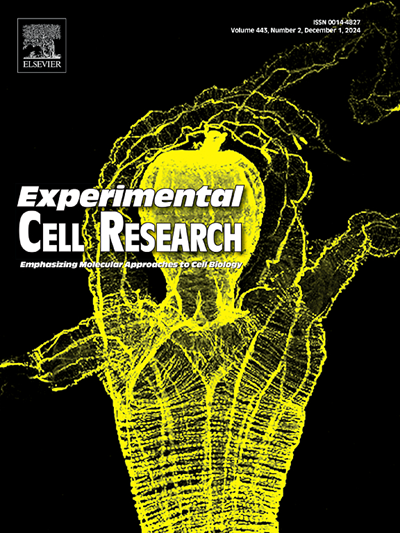脱水非洲爪蟾肝脏及骨骼肌NF-κB信号传导及其抗凋亡作用
IF 3.3
3区 生物学
Q3 CELL BIOLOGY
引用次数: 0
摘要
非洲爪蟾(Xenopus laevis)能够在季节性干旱的长期干旱条件下生存。在这些条件下,青松进入休眠状态,其代谢速率受到抑制,尿素和氨水平升高,生理功能减慢。紫叶参采用多种分子机制来减轻严重脱水和低代谢的有害影响,包括保护细胞和组织免受损伤和萎缩的促存活细胞过程。虽然以前的研究主要集中在抗氧化蛋白在预防氧化应激中的作用,但缺乏关于X. laevis抗凋亡信号传导作用的信息。因此,我们研究了核因子κB (NF-κB)信号及其下游靶基因在豚鼠肝脏和骨骼肌组织中的作用。转录因子NF-κB及其下游靶基因可抑制凋亡机制并促进细胞存活。本研究发现,肝组织中NF-κB信号激活可导致下游抗凋亡蛋白的选择性上调。相反,这种上调在骨骼肌组织中独立于NF-κB信号传导而发生。总的来说,我们的结果有助于扩大我们的抗凋亡机制背后的自然脱水耐性的知识,包括它可能在缓解组织萎缩期间的使用。本文章由计算机程序翻译,如有差异,请以英文原文为准。
NF-κB signaling and its anti-apoptotic effects in liver & skeletal muscle of dehydrated Xenopus laevis
The African clawed frog, Xenopus laevis, is able to survive prolonged arid conditions during seasonal droughts. During these conditions, X. laevis enters aestivation whereby its metabolic rate is suppressed, urea and ammonia levels increase, and its physiological functions slow. Various molecular mechanisms are employed by X. laevis to mitigate the deleterious effects of severe dehydration and hypometabolism, including pro-survival cellular processes that protect cells and tissues from damage and atrophy. While previous research has focused on antioxidant proteins’ role in preventing oxidative stress, information on the role of anti-apoptotic signaling in X. laevis is lacking. As such, we investigated the role of nuclear factor-kappa B (NF-κB) signaling and its downstream target genes in liver and skeletal muscle tissue of X. laevis. The transcription factor, NF-κB, and its downstream target genes work to inhibit apoptotic machinery and promote cell survival. Herein, we found that NF-κB signaling activation in liver tissue leads to the selective upregulation of downstream anti-apoptotic proteins. In contrast, this upregulation occurs independently of NF-κB signaling in skeletal muscle tissue. Overall, our results serve to expand our knowledge of the anti-apoptotic mechanisms underlying the natural dehydration-tolerance of X. laevis, including its likely use in mitigating tissue atrophy during aestivation.
求助全文
通过发布文献求助,成功后即可免费获取论文全文。
去求助
来源期刊

Experimental cell research
医学-细胞生物学
CiteScore
7.20
自引率
0.00%
发文量
295
审稿时长
30 days
期刊介绍:
Our scope includes but is not limited to areas such as: Chromosome biology; Chromatin and epigenetics; DNA repair; Gene regulation; Nuclear import-export; RNA processing; Non-coding RNAs; Organelle biology; The cytoskeleton; Intracellular trafficking; Cell-cell and cell-matrix interactions; Cell motility and migration; Cell proliferation; Cellular differentiation; Signal transduction; Programmed cell death.
 求助内容:
求助内容: 应助结果提醒方式:
应助结果提醒方式:


